Black history in the United States: Key moments from slavery to George Floyd
- Published
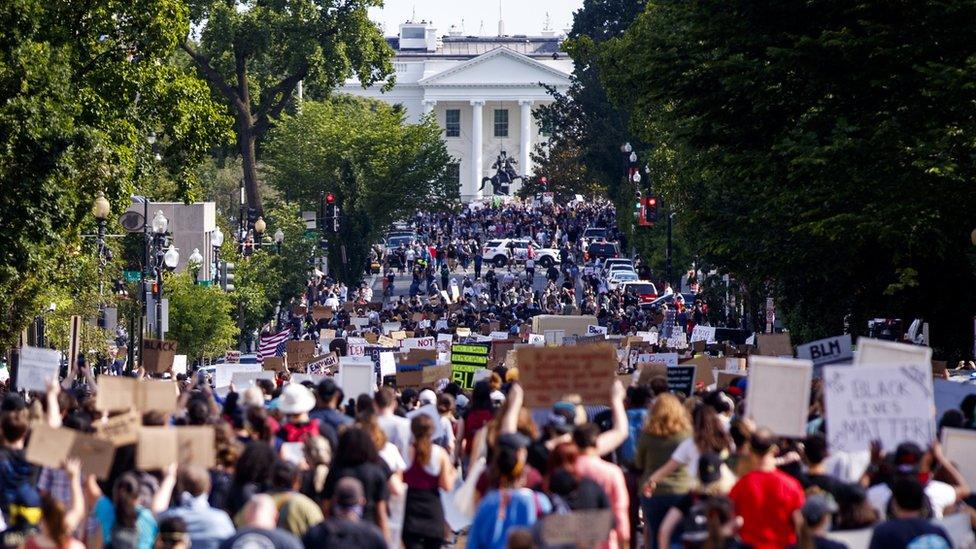
People, who gathered in protest of the death of George Floyd, peacefully march to the White House in Washington DC, USA
Huge protests have taken place across the US, and around the world, in recent weeks after the death of George Floyd.
The 46-year-old died after being arrested, and pinned to the ground, by police officers in the US city of Minneapolis.
Demonstrators claim Mr Floyd's death shows that black people in America still aren't treated as fairly as white people in society.
Newsround looks back at some of the key moments from the USA's long and difficult history of race relations.
Slavery comes to the United States of America
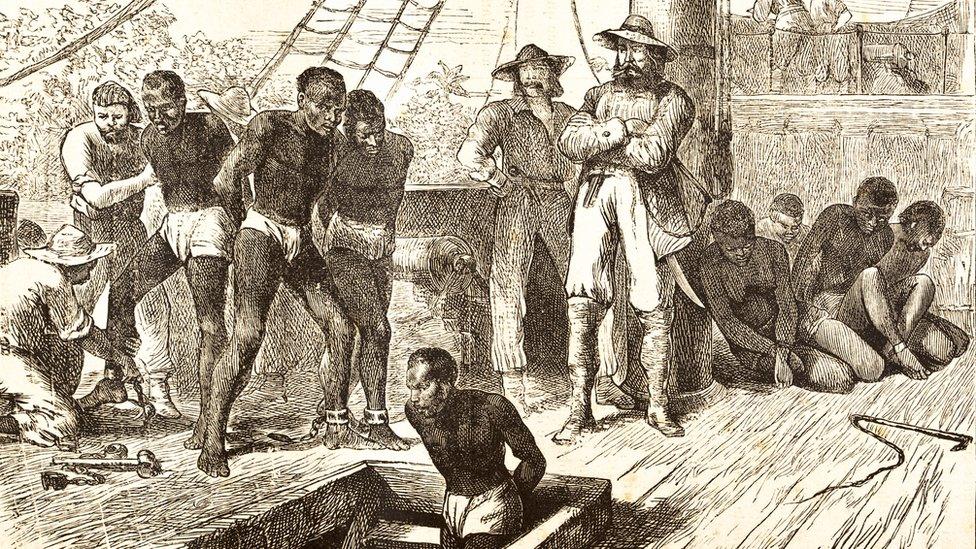
This engraving shows slaves being loaded on to a ship
Most black people in America are the distant relatives of slaves - people taken from Africa hundreds of years ago, and forced to work in the US for free.
At least 12 million Africans were taken to the Americas as slaves between 1532 and 1832, and at least a third of them in British ships.
Many slaves died on the journey to America, and those who survived were treated terribly.
They were forced to work for nothing on big farm lands called plantations growing things like tobacco and cotton.
WATCH: 'My ancestor was a slave' (October 2017)
Most slaves would work really hard for up to 18 hours a day in very bad conditions.
They had a poor diet and no healthcare - often walking for miles in the hot sun, living in rough huts and sleeping on a dirt floor.
Many masters would control their slaves by using violence.
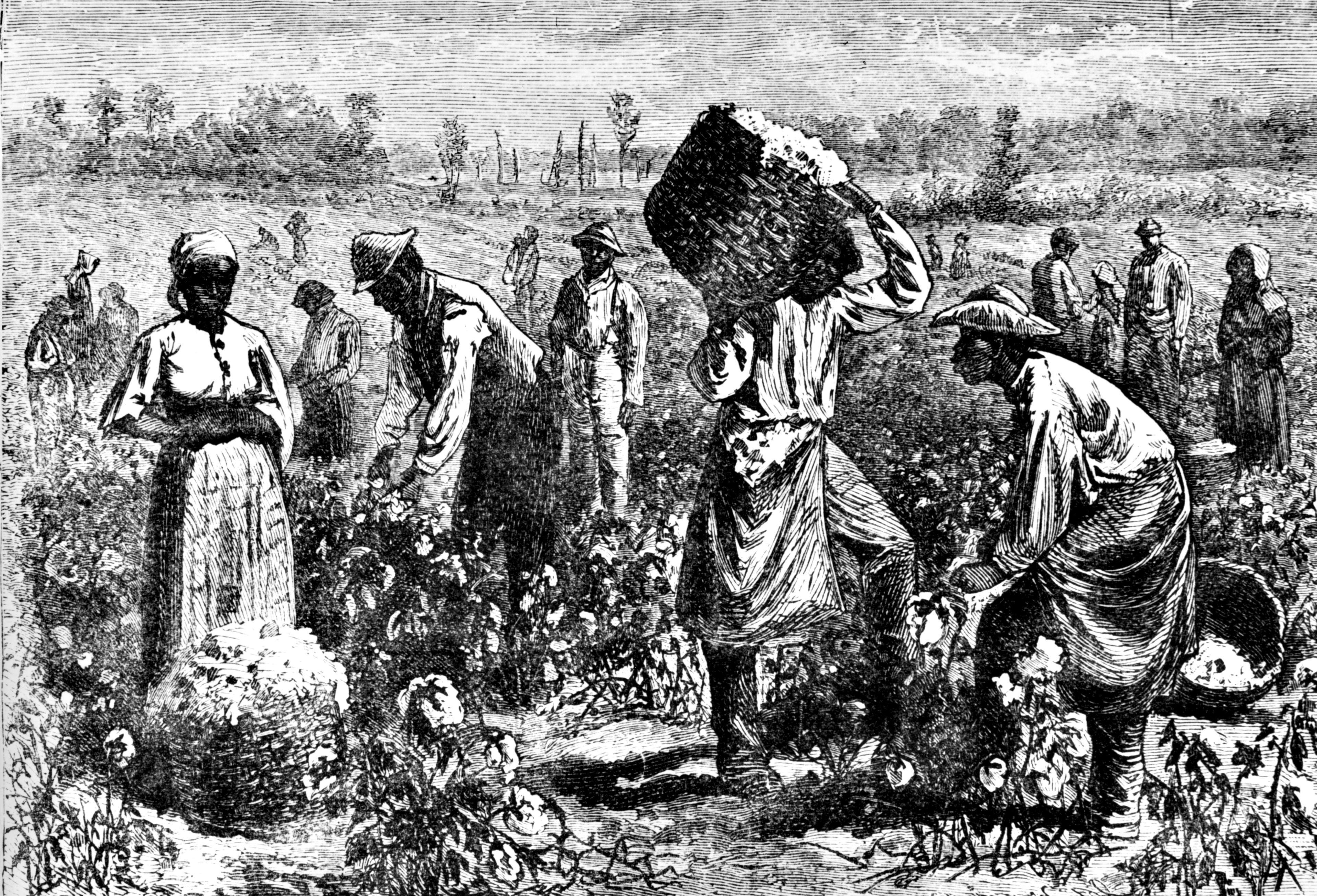
African slaves being forced to work on a plantation
But as time went by, calls began to grow to end the slave trade in America but not everyone was happy about it.
In 1860, a group of states in the south of the USA broke away from the rest of the country because they wanted to keep slavery going.
The Confederate States, as they became known, eventually lost to the northern United States - led by President Abraham Lincoln - in the American Civil War.
Racism is when words or actions are used to discriminate or disadvantage people because of their colour, culture or ethnic origin.
Segregation
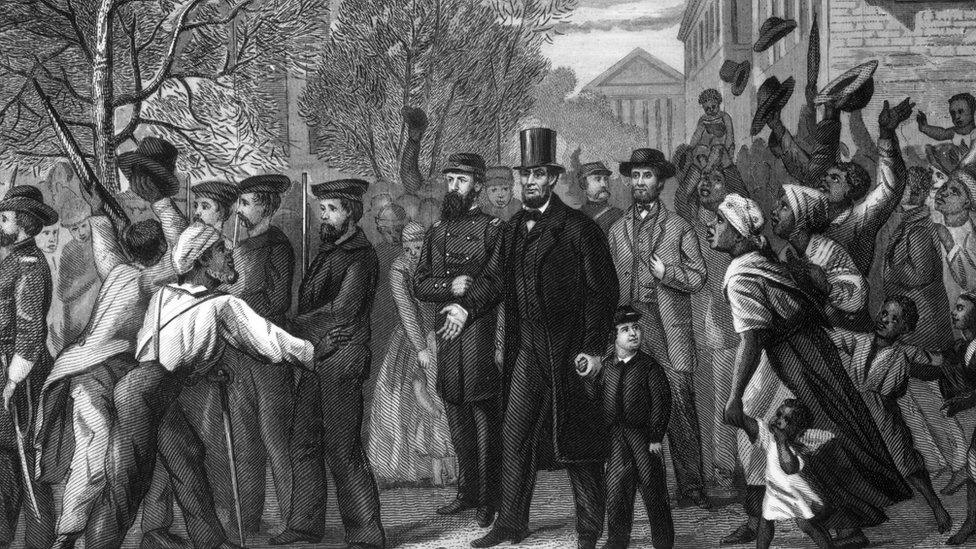
An 1865 engraving of US President Abraham Lincoln (centre with tall black hat) in Virginia surrounded by slaves who had just been freed
Slavery was eventually banned in the USA in 1865 but things still weren't equal.
Racist groups including the Ku Klux Klan (KKK) began to grow in the south of the country with white members intimidating, attacking and killing black people.
Most southern states soon began introducing new rules - known as 'Jim Crow' laws - which stopped black Americans from being able to vote and forced them to use separate shops, restaurants, parks and schools. This was called segregation.
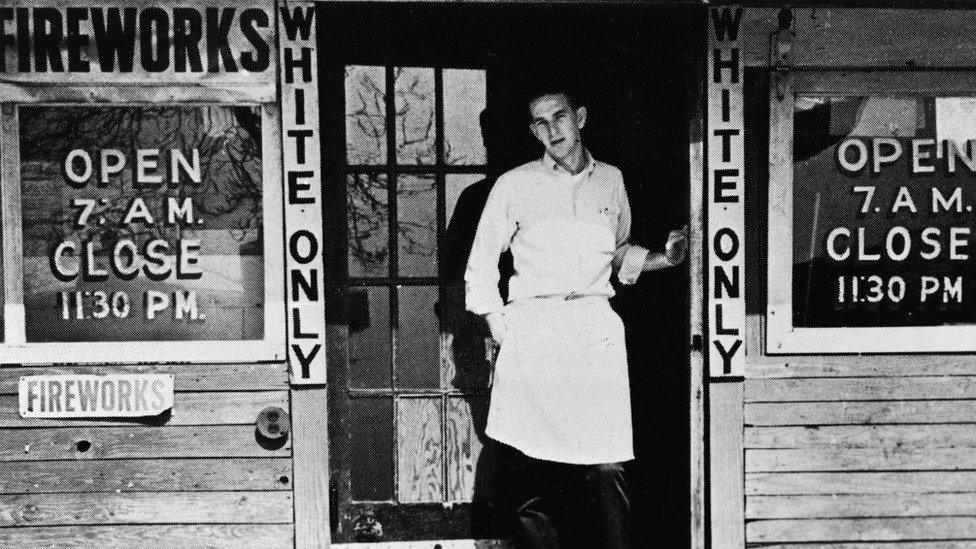
A man stands in the doorway of a store marked 'White Only' in the United States around 1950
The Fourteenth Amendment to the US Constitution was supposed to give newly freed slaves equal citizenship with white people.
However, in 1896, the US Supreme Court - the highest court in the country - ruled in Plessy v Ferguson that segregated facilities for black and white people had to be "separate but equal".
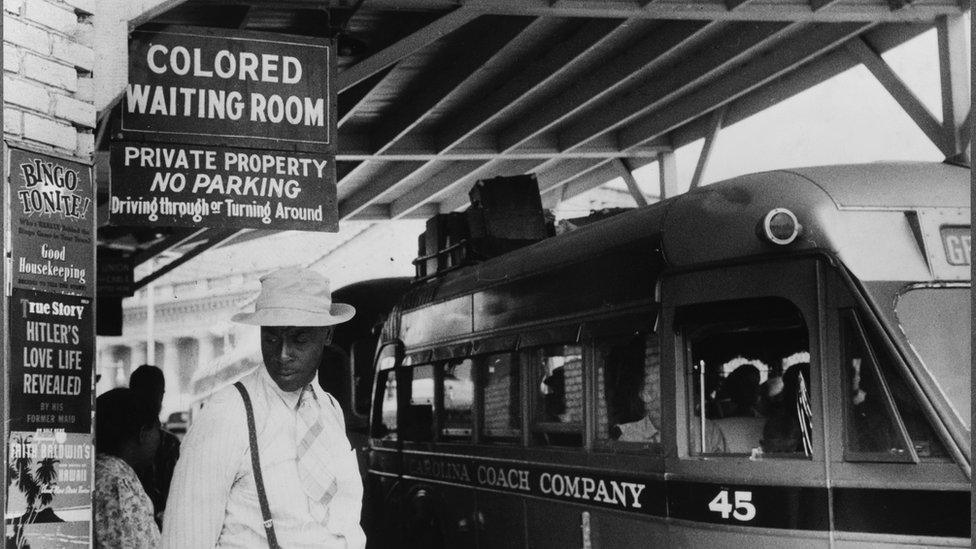
Photo taken at a bus station in the state of North Carolina in May 1940 showing a "colored waiting room" board - a sign of racial segregation
But in reality, black people's facilities were almost always worse than white people's.
Poverty was also a major problem. Black people often had lower paid jobs in society, and many black women worked as servants to white people.
Gradually, black Americans began to challenge their unequal status.
School kids discuss the issue of racism with anti-bullying campaigner Alex Holmes
The rise of the US Civil Rights Movement
There had been successful attempts to improve the status of black people. The National Association for the Advancement of Colored People (NAACP) was set up in 1909, which helped to provide lawyers for black people who were treated very badly by the courts.
The Harlem Renaissance, in the 1920s and 1930s, led to black Americans looking into their own history and beginning to connect to their African roots.
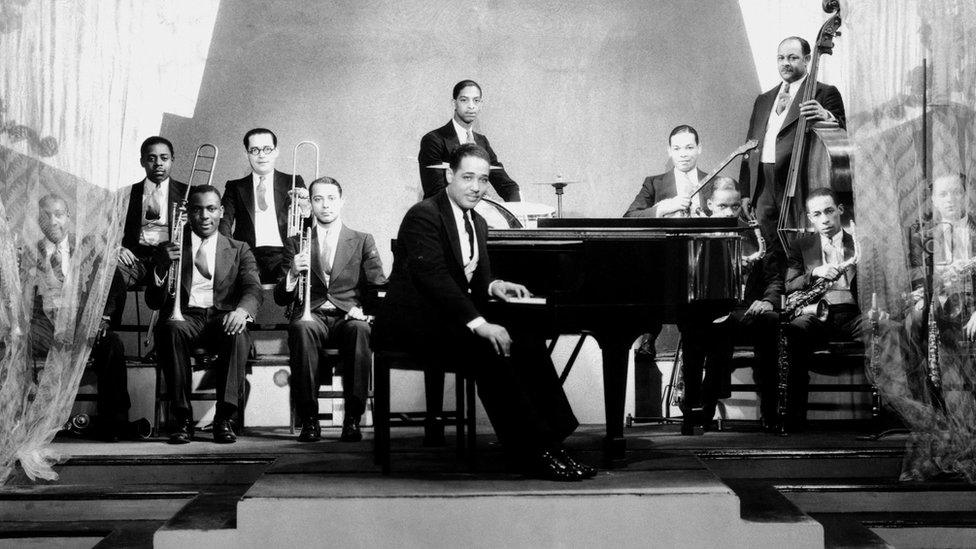
American jazz pianist composer and bandleader Duke Ellington (pictured centre with his orchestra in 1929) rose to fame during the Harlem Renaissance and helped lay the foundation for future generations of black musicians
Black writers such as Langston Hughes and Zora Neale Hurston wrote books and poetry that explored and celebrated black culture.
And in 1942, James Farmer founded the Congress of Racial Equality (CORE) to challenge racial segregation by using non-violent actions such as protesting.
However, it was in the 1950s and 1960s that the civil rights movement in the United States really began to pick up pace to give black Americans legal equality.
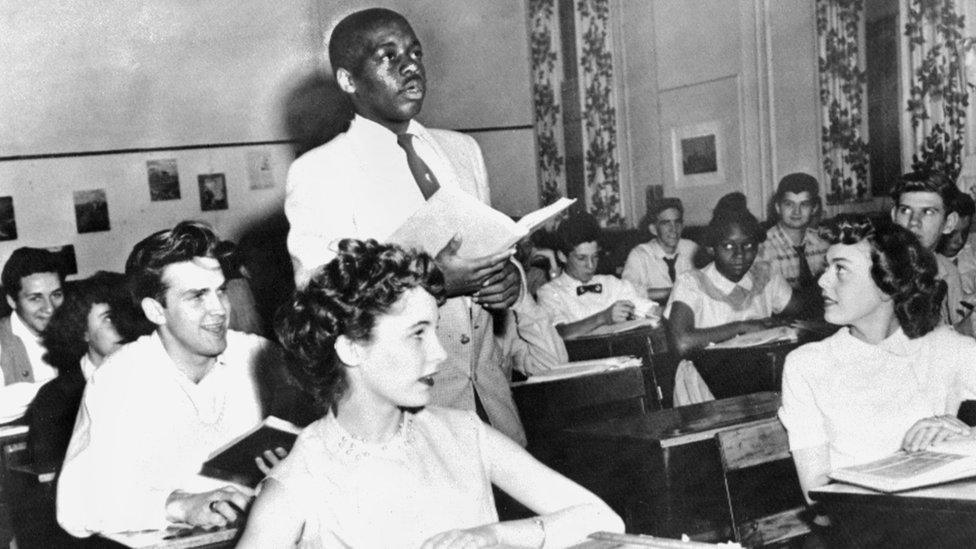
Nathaniel Steward (pictured standing) and other black students join the Saint-Dominique school in Washington DC in May 1954 after the US Supreme Court banned segregation in state schools.
In 1954, Brown v Board of Education was a historic case that reached the highest courts in America.
With the help of the NAACP, Reverend Brown, a black man, won the right in the Supreme Court to send his children to a white school in the state of Kansas.
In a huge decision, the Supreme Court finally ruled that segregation could not ever be equal.
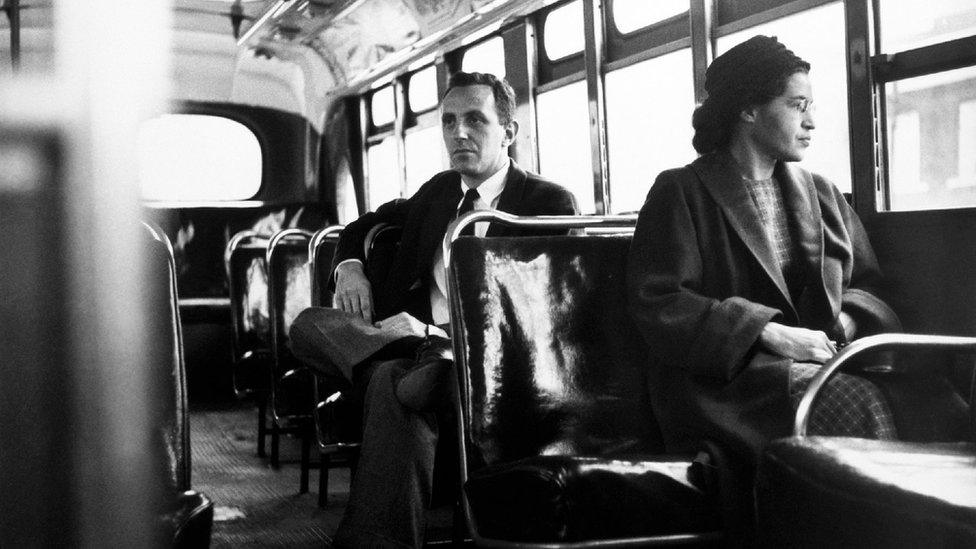
Rosa Parks sits in the front of a bus in Montgomery, Alabama, after the Supreme Court ruled segregation illegal on the city bus system in 1956.
A year later, 42-year-old black woman Rosa Parks politely refused to give up her seat on a bus to a white man, an act which was against the law in the state of Alabama.
Her protest sparked black people to stop using buses for 381 days, led by a Baptist minister called Rev Martin Luther King.
Mrs Parks was fined $14 at court but the bus boycott led to the end of different treatment for black people on public transport.
People always say that I didn't give up my seat because I was tired, but that isn't true. I was not tired physically ... No, the only tired I was, was tired of giving in.
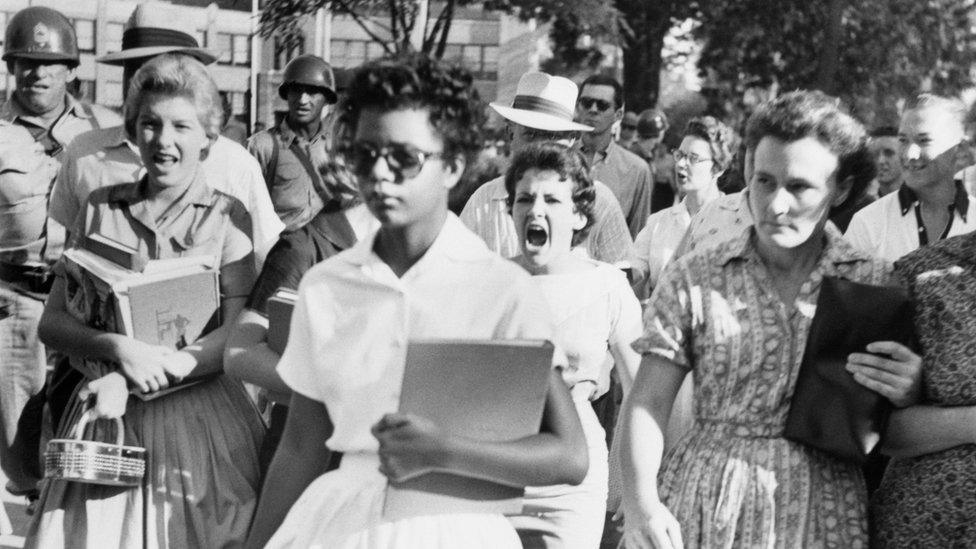
Elizabeth Eckford (pictured centre with glasses) ignores the angry screams and stares of fellow white students on her first day of school at Little Rock's Central High School
In 1957, nine black students carried out their right to go to a white school in Little Rock, Arkansas.
Mobs threatened the students, and even the governor of Arkansas tried to stop them by sending in the state National Guard.
President Eisenhower eventually took charge and ordered the soldiers to protect the students as they went to school.
'I Have A Dream'
WATCH: Why you should know about Martin Luther King (April 2018)
On 28 August 1963, US civil rights leader Martin Luther King marched to Washington DC, the capital city of the USA.
He delivered a ground-breaking speech in front of a crowd of 250,000 people from all backgrounds.
His 17-minute long speech was called 'I have a Dream', and talked about living in a future where all people are equal, regardless of the colour of their skin.
His speech went down in history, inspired millions of people, and helped to bring about the 1964 Civil Rights Act.
I have a dream that my four children will one day live in a nation where they will not be judged by the colour of their skin but by the content of their character.
WATCH: American kids explain why Martin Luther King matters to them (April 2018)
This Act ended the separation of people by race in public places, and banned companies from not giving people a job on the basis of race, gender, religion or national origin.
In 1964, Martin Luther King was awarded the the Nobel Peace Prize for his campaigning but four years later in 1968 he was shot and killed.
To remember his achievements, people in the US celebrate his memory every year on Martin Luther King Day by holding parades and giving people a day off work or school.
Malcolm X
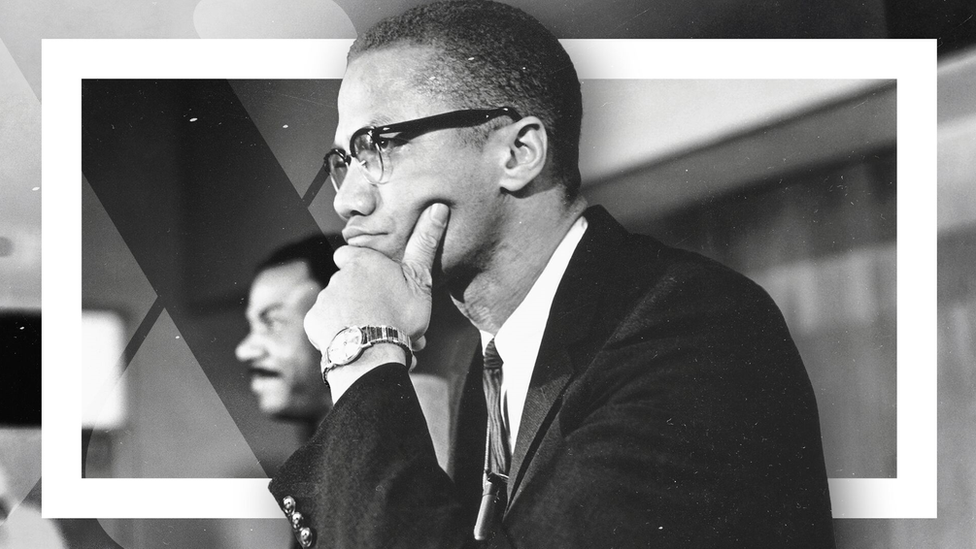
Malcolm X was a really important figure in the civil rights movement.
During the 1950s and early 1960s, he was the principle speaker for the Nation of Islam. Members of the Nation of Islam believed that black people were superior to white people.
A lot of people found this controversial because they believed it was going against the idea of equality, and against the wider civil rights movement.
Malcolm X disagreed with Martin Luther King's non violent approach and accused him of letting down African Americans by urging them not to fight back.
You can't separate peace from freedom because no one can be at peace unless he has his freedom.
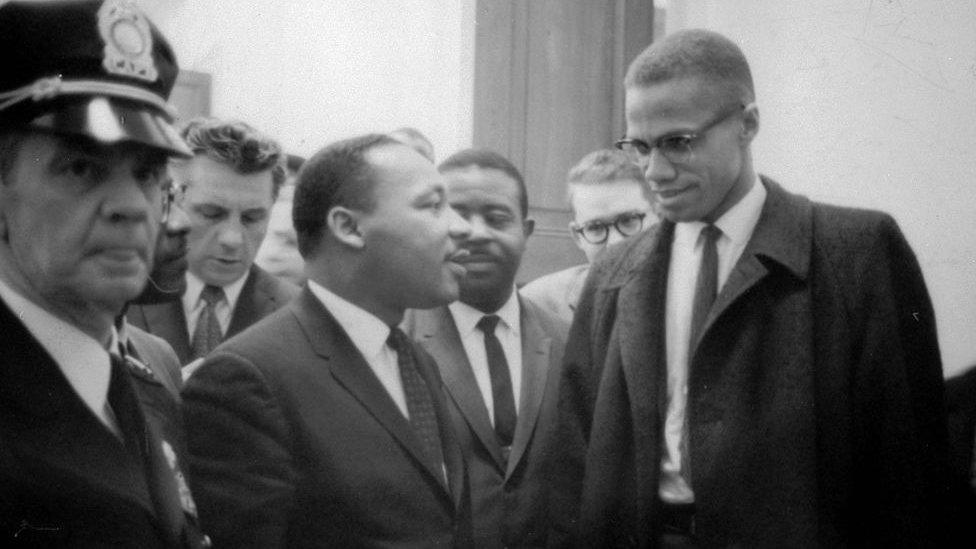
Malcolm X ended up working with Martin Luther King - but that didn't happen for a while
Malcolm said that black people should protect themselves "by any means necessary".
He also disagreed with Martin Luther King's ambition of an America where black and white people lived together. Malcolm didn't believe in that vision and wanted a separate nation just for black people.
However, following a pilgrimage to Mecca, Malcolm X changed his beliefs and began to work with other civil rights leaders to achieve equal rights peacefully. He also left the Nation of Islam.
On 21 February 1965, Malcolm X was assassinated while speaking at a rally in New York.
African Americans achieve legal equality
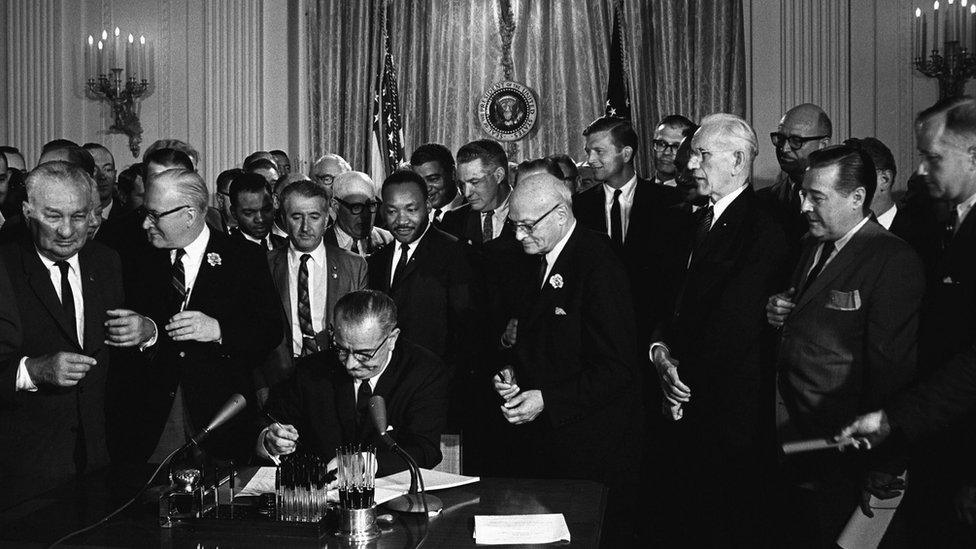
US President Lyndon B. Johnson (pictured sitting at the table) signing the Civil Rights Act in July 1964 as Martin Luther King looks on behind him
White violence, such as that seen when peaceful black protestors were attacked by police dogs in Birmingham, Alabama forced the US government to step in to give black people their rights.
In 1964, the Civil Rights Act banned segregation in schools, public places or jobs.
A year later, the Voting Rights Act gave all black people the vote. It also made it illegal for US states to do anything that might limit the number of people able to vote.
Finally, the Fair Housing Act in 1968 banned discrimination in housing.
Black power
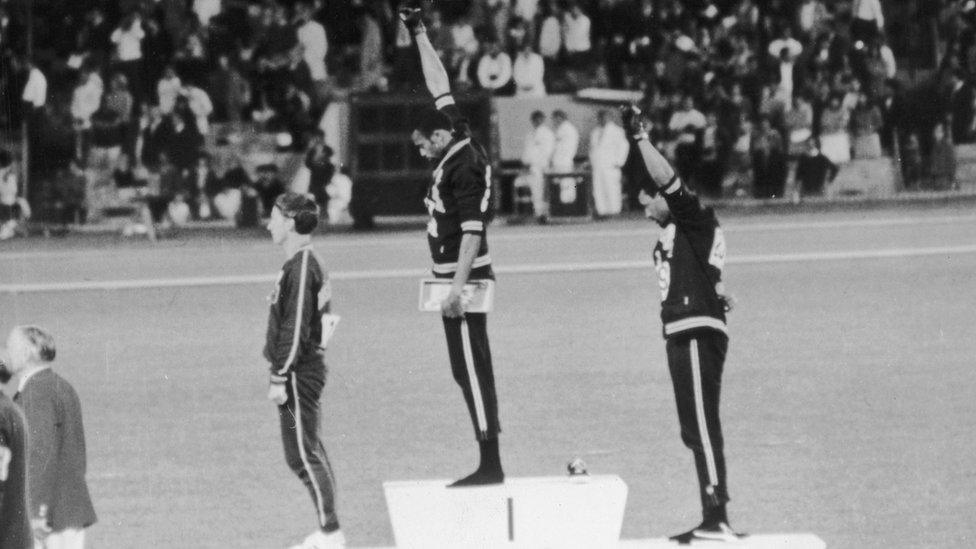
American athletes Tommie Smith and John Carlos protest with their raised- fist salute, a symbol of black power and the human rights movement at large, at the 1968 Summer Olympics in Mexico
Even with these huge changes, civil rights did not give black Americans economic equality, and they still remained a socially disadvantaged group.
They were less likely to succeed at school, more likely to be poor, and more likely to go to prison than white people.
The total black population in America's urban areas increased from 6.1 million in 1950 to 15.3 million in 1980.
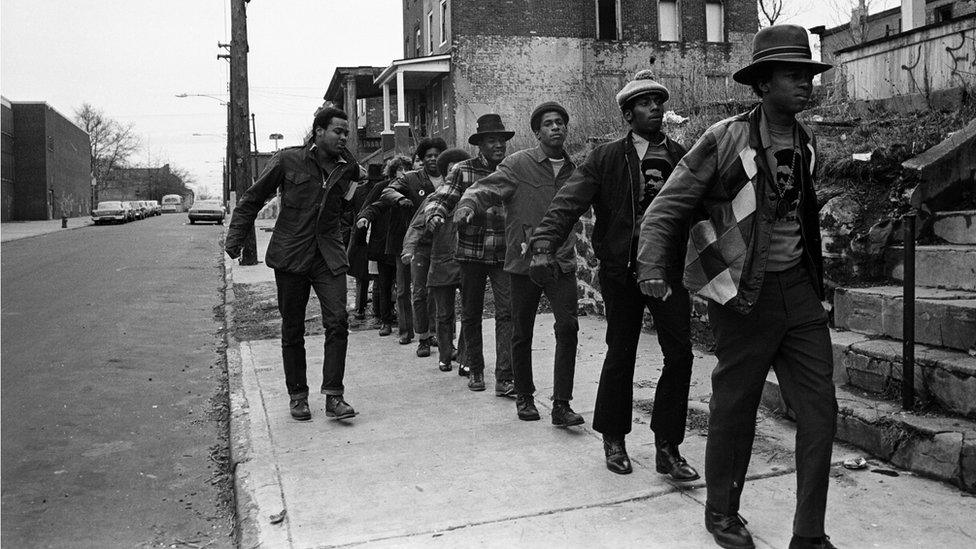
Members of the Black Panthers group march down the street
At the same time, wealthy white Americans moved out of the cities into the suburbs, there were not many job opportunities for black people.
Groups such as the Black Panthers grew as a result. They wanted African American communities across the country to start looking after themselves by setting up businesses, housing and education schemes.
The Black Panthers also created patrol groups to protect their own communities, which led them to clash with local police.
In 1969, 27 Black Panthers were shot dead by the police in several gunfights, and over 700 Panthers were arrested for various offences. By the middle of the 1970s, the Black Panthers had all but disappeared.
Affirmative action
In 1972, the United States Congress passed two laws: The Equal Employment Opportunity Act and the Equal Opportunity Act.
Together these laws were known as 'affirmative action'. Affirmative action made it necessary for the government agencies, state governments, local governments and public organisations to hire more African Americans.
Many African Americans also went on to own their own businesses - there were over 300,000 African American owned businesses in the USA by 1982.
Riots in Los Angeles
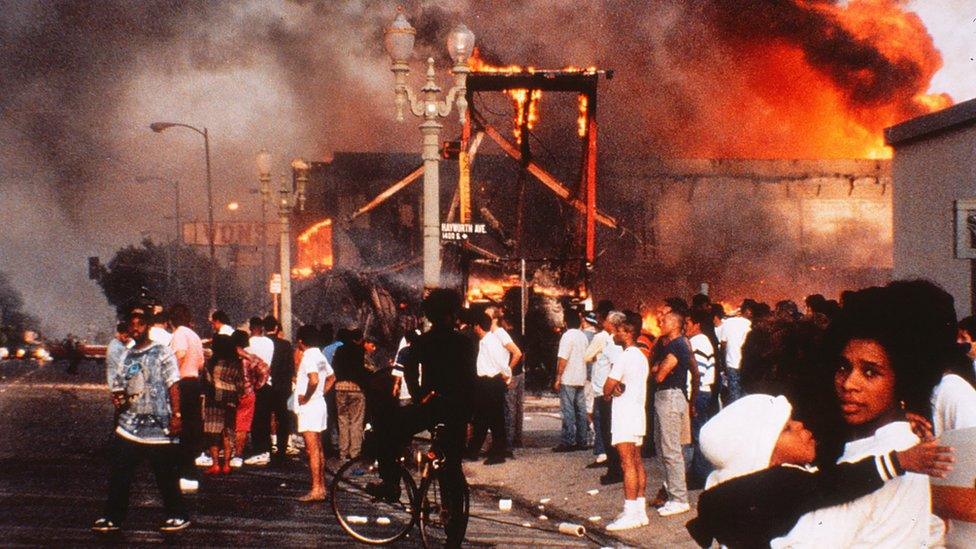
Los Angeles suffered days of riots after four police officers were found not guilty of beating Rodney King
The Los Angeles riots erupted on 29 April 1992 after four white police officers were let off over the beating of black motorist Rodney King - even though it was caught on camera.
The black and white footage of King's beating offered proof of what the black community had been complaining about for decades - police brutality.
Anger led to days of looting and burning, 54 deaths and £610m of damage to the city.
It was the first time the black community's complaints couldn't be denied and swept under the rug.

Military troops were sent in to Los Angeles, California, to help restore order after rioting occurred
An independent investigation looking into the King beating highlighted a culture of racism and abuse within the LA Police Department (LAPD), where excessive force was not only tolerated but often covered up by fellow officers in a code of silence.
The report eventually called for the LAPD to focus on boosting multiculturalism in the police force, so that the officers would better reflect the communities they patrol.
The 44th president of the United States
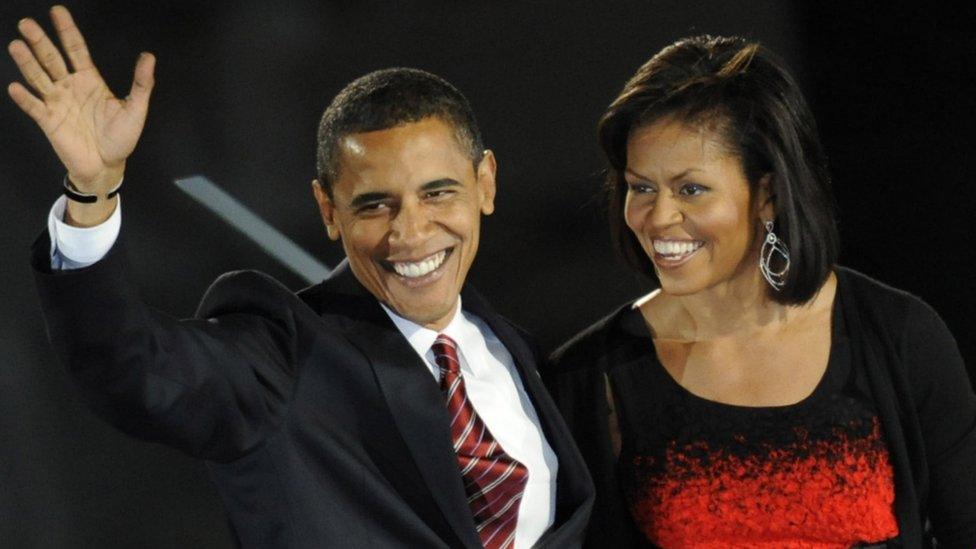
Barack Obama and his wife Michelle stand on stage during their election night victory rally on 4 November 2008 in Chicago
In 2008, Americans, both black and white, voted for their first black president - Barack Obama.
"It's been a long time coming, but tonight... change has come to America," Mr Obama told a crowd at a victory rally in Chicago after winning the election.
WATCH: A look back at President Obama's time in the White House (January 2017)
Obama also said: "If there is anyone out there who still doubts that America is a place where all things are possible, who still wonders if the dream of our founders is alive in our time, who still questions the power of our democracy, tonight is your answer."
#BlackLivesMatter Movement
Growing Up Black In America - a Newsround report
In 2014, a black teenager called Michael Brown was shot dead by a white policeman in the town of Ferguson.
The officer who did it was not punished and that decision sparked huge protests by people, who thought it showed that black people's lives still mattered less than white people's in the USA.
However, there are some Americans who disagree and say the police are just doing their job and protecting people from dangerous situations.
Some police officers have been targeted during protests and even killed.
School kids on why many people in the black community dislike the police
Since then there have been other high profile cases of black men and women being killed in incidents with the police.
Eric Garner was killed by officers in New York in the summer of 2014 after being choked during his arrest. The police officer involved was fired but not prosecuted.
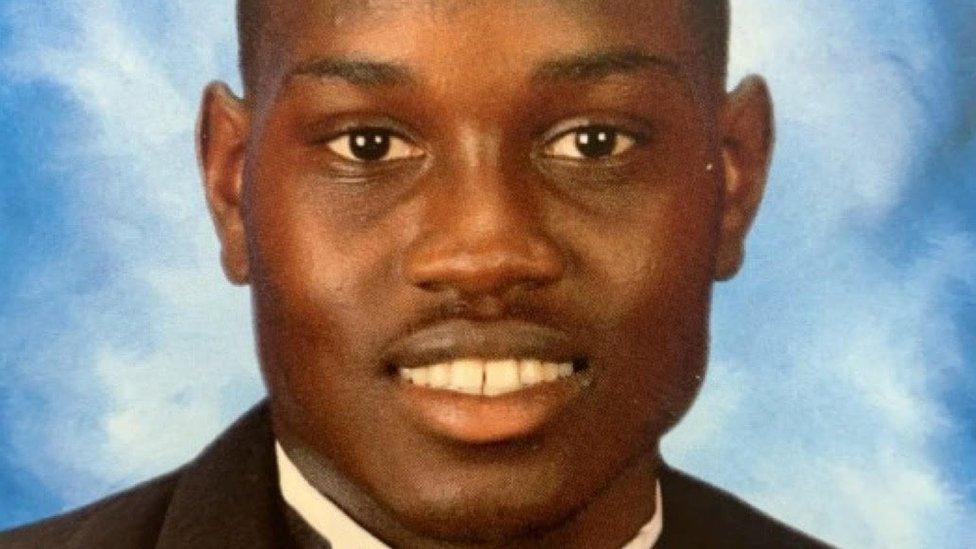
Twenty-five-year-old Ahmaud Arbery was killed while out jogging
More recently, Ahmaud Arbery was shot and killed while jogging in the state of Georgia. A father and his adult son, who are white, and one other man have been arrested.
Arbery's death gained widespread attention in the national media and provoked anger.

The death of 26-year-old emergency health worker Breonna Taylor triggered a fresh wave of anger in the United States over officers shooting black civilians.
Earlier this year, Breonna Taylor was allegedly shot and killed by police at her home in the US state of Kentucky after they raided the wrong address.
The Federal Bureau of Investigation (FBI), which is in charge of intelligence inside the US and has the power to enforce the law, is investigating.
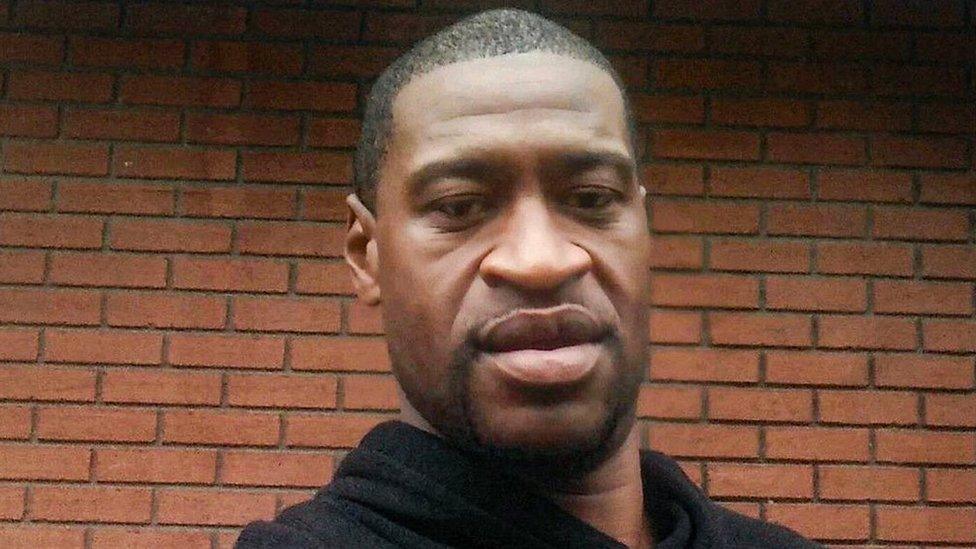
George Floyd, who died while being arrested by police in May 2020
On 25 May 2020, George Floyd, an African-American man, died after being held in police custody in Minneapolis.
Despite saying he couldn't breathe, Mr Floyd was kept pinned to the ground and he died soon afterwards.
Four police officers have been sacked. One of them, Derek Chauvin, has been charged with second-degree murder.
WATCH: US kids give their reactions to protests sparked by George Floyd's death
While many of the demonstrations were peaceful, some places did see rioting, looting and violence break out on the streets.
What happened to Mr Floyd has again raised the issue of racism in American society and the unfair treatment that many African-American communities feel they face in the US, particularly when it comes to the police.
- Published2 October 2023

- Published28 September 2023
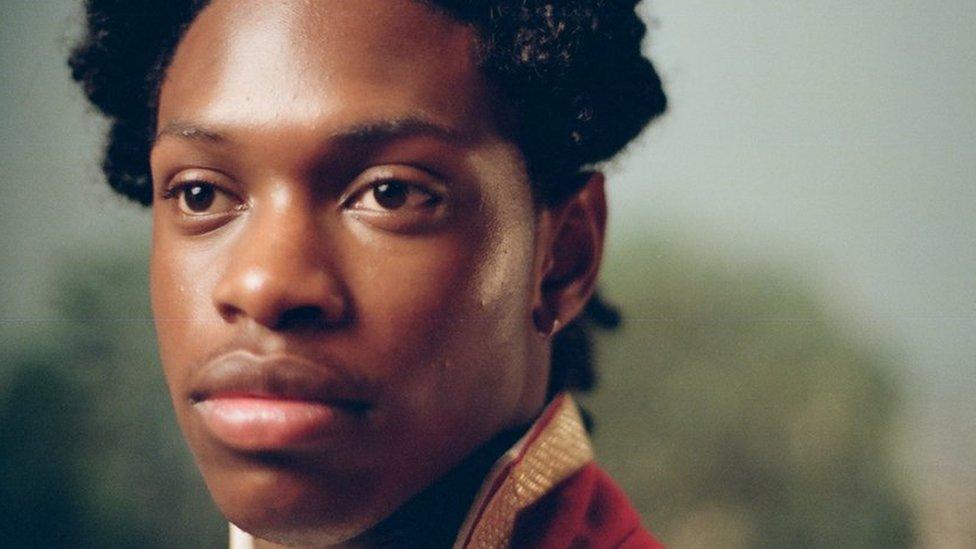
- Published2 October 2017

